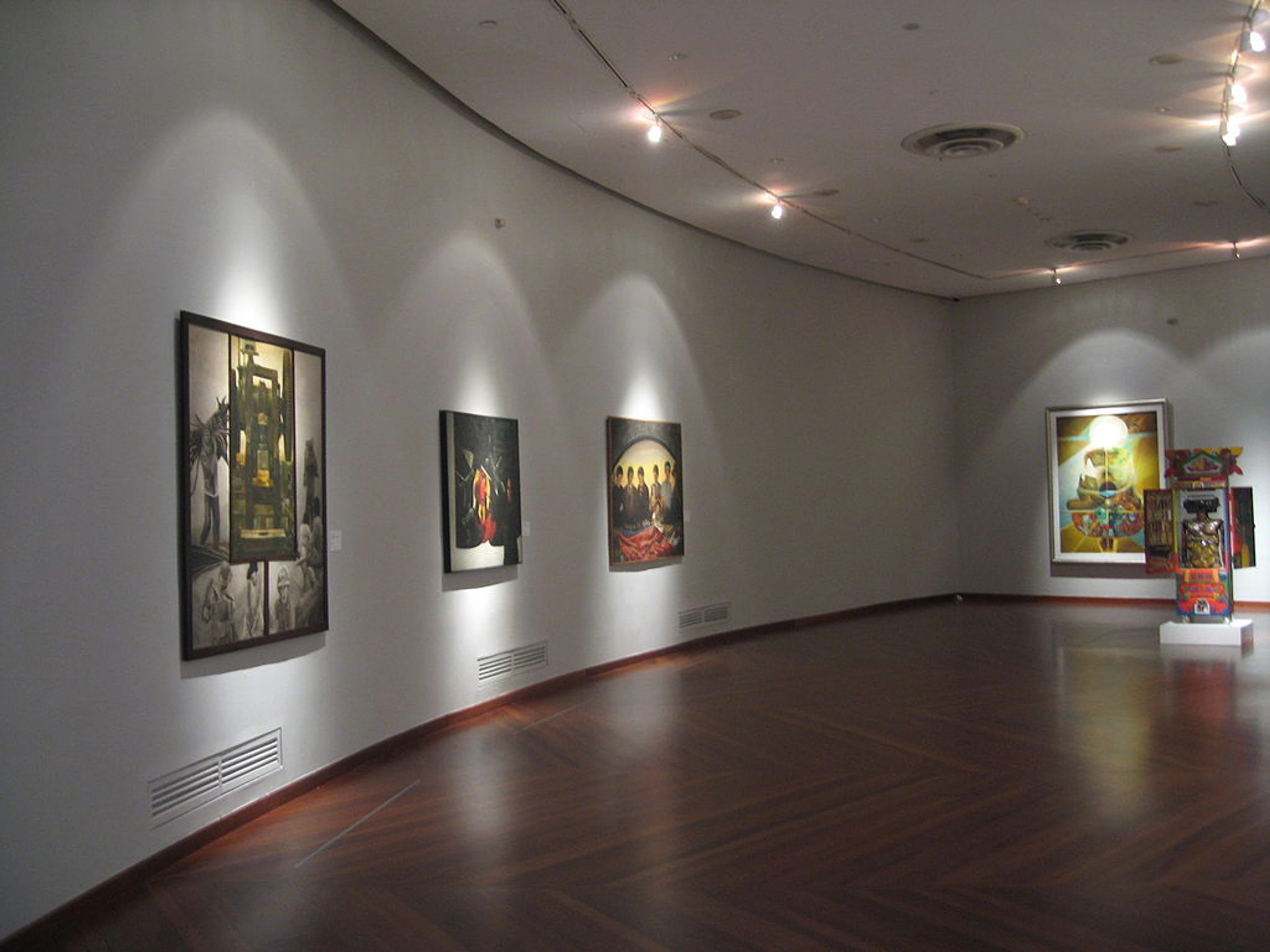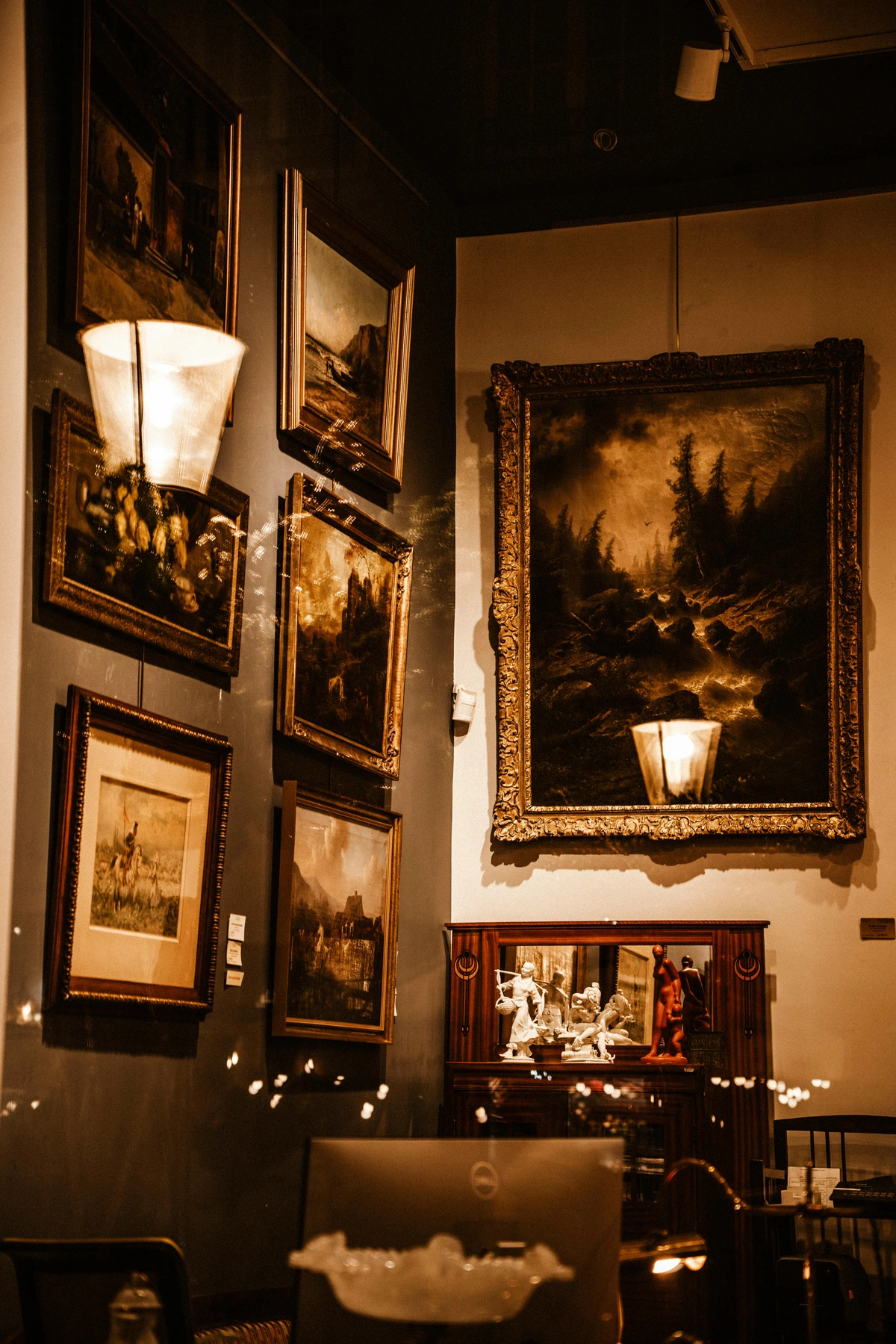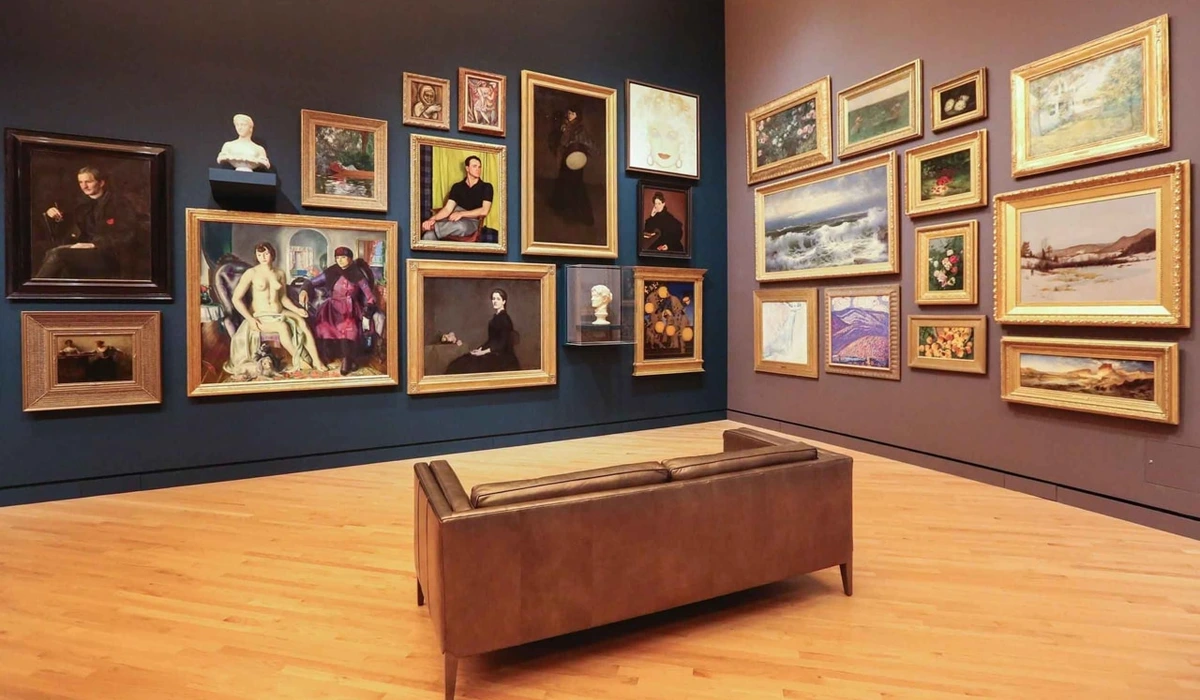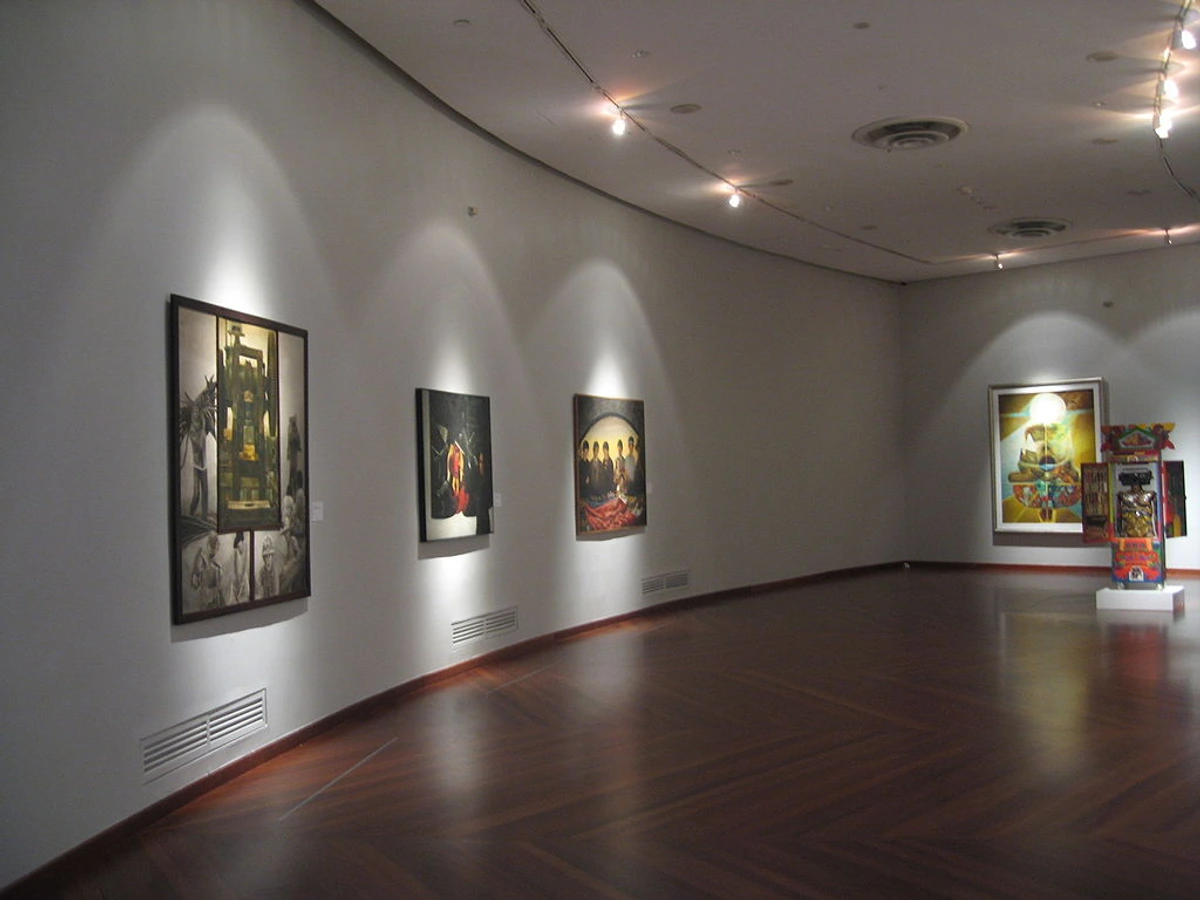
The Corporate Canvas: A Personal Guide to Buying Art for the Office
Discover the transformative power of art in corporate spaces. This guide explores the benefits, how to choose art, navigate the market, and practical considerations for creating an inspiring office environment.
The Corporate Canvas: A Personal Guide to Buying Art for the Office
Let's be honest. Corporate spaces can sometimes feel... well, a bit sterile, can't they? Rows of desks, beige walls, the hum of computers. It's functional, sure, but does it spark joy? Does it inspire? As an artist, I spend my days surrounded by color, texture, and ideas. Stepping into some offices feels like entering a different dimension – one where creativity might be politely asked to wait outside.
But it doesn't have to be that way. More and more companies are discovering the transformative power of art. It's not just about filling empty wall space; it's about creating an environment that reflects values, boosts morale, and even influences how clients and employees feel. If you're tasked with bringing art into your workplace, or just curious about why companies do it, let's dive in. It's a journey that's perhaps more personal than you might think.
Why Bother? The Unexpected Benefits of Corporate Art
Okay, so maybe you're thinking, "Art? For the office? Isn't that a bit... extra?" I get it. Budgets are tight, and there are a million other things to worry about. But hear me out. The benefits of corporate art go far beyond mere decoration.
From my perspective, art is a conversation starter. It breaks down barriers. In a corporate setting, it can do the same thing. It gives people something to talk about besides the latest project deadline. It can humanize a space, making it feel less like a machine and more like a place where people actually work and think.
Beyond that, there are tangible benefits:
- Boosting Creativity and Productivity: Exposure to diverse visual stimuli can literally spark new ideas. A vibrant abstract piece might just be the jolt someone needs to think outside the box.
- Enhancing Brand Identity: The art you choose says something about your company. Is it bold and innovative? Traditional and stable? Art helps tell that story visually.
- Improving Employee Well-being: A visually appealing and stimulating environment can reduce stress and increase job satisfaction. Who wouldn't rather look at a beautiful painting than a blank wall?
- Making a Statement to Clients: Art can elevate your space, making a memorable impression and signaling sophistication and forward-thinking.
- Supporting the Arts: Buying art, especially from local artists or emerging artists, directly supports the creative community. That feels good, right?
It's not just about aesthetics; it's a strategic decision that impacts the entire workplace ecosystem.
More Than Just Pretty Pictures: Defining Your Corporate Collection
So, you're convinced. Art is a good idea. Now what? This is where it gets interesting, and maybe a little daunting. Choosing art for a whole company isn't like picking a piece for your living room. It requires a different kind of thinking.
Setting the Scene: Understanding Your Space and Brand
Before you even look at a single piece, look at your space. What's the architecture like? What's the function of the area? A bustling open-plan office needs different art than a quiet meeting room or a formal lobby.

Consider your brand. What message do you want to send? A tech startup might lean towards contemporary art or even street art, while a law firm might prefer something more traditional or abstract but serene. It's about aligning the art with your company culture and values.
The Budget Talk: It's Not Always Millions
Let's talk money. Corporate budgets can vary wildly. The good news? You don't need to buy a Picasso (unless you want to!). You can build a fantastic collection on a modest budget.
Think about buying art for less. This could involve:
- Art prints (including limited editions)
- Works from emerging artists
- Exploring art rental services
Understanding art prices can feel like decoding a secret language, but it's learnable. It's about finding value and impact within your means. Don't be afraid to explore different avenues.
Finding Your Vibe: What Art Says About You
This is the fun part – defining the kind of art. Do you want bold, colorful pieces that energize? Or subtle, calming works that create a sense of peace? Abstract art is often popular in corporate settings because it's versatile and can be interpreted in many ways, sparking conversation without being overly literal.

Think about the elements of art – color, line, shape, texture. How do these relate to your brand or the feeling you want to create? A piece with strong, clean lines might suit a modern, minimalist office, while something with rich textures could warm up a more traditional space.
It's also worth considering the types of artwork – paintings, sculptures, photography, mixed media. Each brings a different dimension.
Where to Find the Goods: Navigating the Corporate Art Market
Okay, you have a plan. Now, where do you actually get the art? The corporate art market has its own ecosystem, but it overlaps with the general art world in many ways.
Working with Galleries and Consultants
For larger projects or if you need expert guidance, working with an art consultant or a gallery specializing in corporate collections is a common route. They can help you define your needs, source appropriate art, and handle logistics like framing and installation.
Art galleries are fantastic resources. They represent artists and can offer insights into their work and market. Consultants often work with multiple galleries and artists, giving you a broader range of options.

Buying Directly from Artists
This is a path I'm particularly fond of. Buying directly from an artist can be incredibly rewarding. You get a direct connection to the creator and their story, and often, it's a more cost-effective option, especially when looking for affordable original art.
Many artists are open to working on commissions or selling existing work. It's a chance to build a relationship and acquire truly unique pieces.
Art Fairs and Online Platforms
Art fairs are like concentrated bursts of the art world. You can see a vast amount of work from different galleries and artists in one place. They can be overwhelming, but also incredibly efficient for sourcing.
Buying art online has also become increasingly popular and accessible. Reputable online galleries and platforms offer a wide selection, often with detailed information about the artwork and artist. Just do your research!
The Nitty-Gritty: Practical Considerations
Once you've chosen the art, there are practical steps to ensure it looks its best and is protected.
Hanging It Right
How you display art is almost as important as the art itself. Proper wall decoration and hanging techniques are crucial, especially in a busy office environment. You need to consider height, lighting, and the flow of the space.

For larger or heavier pieces, professional installation is highly recommended. You don't want your beautiful new acquisition taking an unexpected dive!
Keeping It Safe and Sound
Art requires care. Environmental factors like direct sunlight, humidity, and temperature fluctuations can damage artwork over time. Think about where you place pieces and consider protective framing or display cases.
Regular art care and maintenance, like dusting and gentle cleaning, will keep your collection looking its best. For valuable pieces, professional conservation advice might be necessary.
Insurance is also a must. Corporate collections represent a significant asset, and protecting that investment is just good business sense.
My Two Cents (As an Artist)
From my side of the easel, seeing my work find a home in a corporate space is fascinating. It's a different context than a private home or a museum. It becomes part of a shared environment, influencing many people daily.
I often think about the journey of a piece – from an idea in my studio, through the creative process (you can see a bit of my own timeline and process), to hanging on a wall where people work, meet, and collaborate. It's a powerful transformation.
If you're considering buying art for your company, I encourage you to look beyond just filling space. Think about the energy you want to bring into the room, the conversations you want to start, and the artists you want to support. There's a world of incredible art out there, waiting to make your office a little less beige and a lot more inspiring. Maybe you'll even find something you love in my own collection of art for sale.
Corporate Art Buying FAQ
Here are some common questions that pop up when companies consider buying art:
- Q: Is corporate art buying a good investment? A: While some corporate collections appreciate in value, the primary driver is usually not investment return. The focus is on the benefits to the workplace environment, branding, and employee well-being. Art as an investment is complex and usually requires expert guidance.
- Q: How do we choose art that everyone will like? A: You probably won't please everyone! The goal isn't universal approval, but rather selecting art that aligns with the company's brand and values, sparks interest, and creates a positive atmosphere. Involving employees in the selection process (e.g., through surveys or committees) can help foster acceptance and engagement.
- Q: Should we buy original art or prints? A: This depends on your budget and goals. Original art offers unique value and direct support to the artist. Prints are more affordable and allow you to acquire works by well-known artists or fill larger spaces cost-effectively. A mix of both can be a good approach.
- Q: How do we handle installation and maintenance? A: For significant pieces, professional art handlers are recommended for installation. Establish a plan for regular cleaning and environmental monitoring. Consult with galleries or art consultants for advice on care and conservation.
Wrapping It Up
Bringing art into the corporate world is a chance to inject personality, creativity, and humanity into spaces that desperately need it. It's a process that can be strategic, rewarding, and yes, even personal. By thinking carefully about your goals, exploring the diverse art market, and handling the practicalities, you can create a corporate collection that not only looks good but does good – for your brand, your employees, and the artists who make the world a more colorful place.
So, go forth and explore! The corporate canvas awaits your touch.




